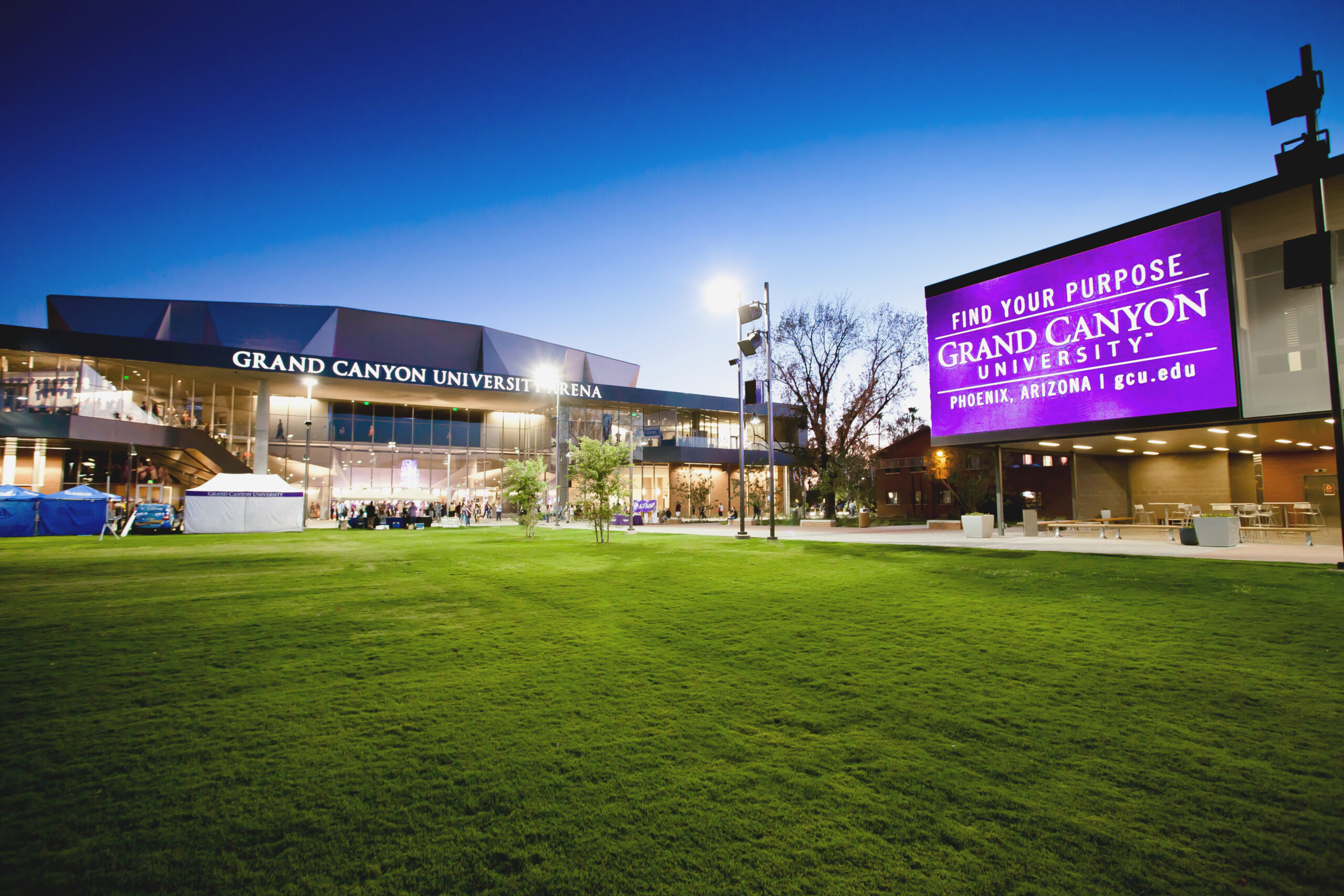By Mike Kilen
No one was more pleased to sit in front row baseline seats at Global Credit Union Arena on Sunday and look around at what was unfolding.
T.C. Dean was the only Black student at Grand Canyon University in 1956 – and its first Black basketball player – and he was witnessing his alma mater host the HBCU All-Star Game in front of a national audience on CBS, with longtime voice of March Madness, Clark Kellogg, providing commentary.
The HBCU – or Historically Black Colleges and Universities – are 107 institutions in the U.S., established in the 19th century to give Black students an opportunity for a higher education that wasn’t available to them elsewhere. The HBCU All-Star Game, in its third year, was created to advocate, mentor and expose HBCU students, student-athletes and coaches to a wider audience.
“It makes me feel really great. Coming up the way I came up, seeing what’s going on now, it’s amazing that Grand Canyon has this, because being the first one here, I can’t believe it,” he said.
Dean said the coach then, David Brazell, recruited him out of the housing projects in Phoenix to rebound. “He didn’t know I could score,” he said, laughing, though he is still known for crashing the boards to a school record (20.1 rebounds per game) that he says will “never be broken.”
“Coach Brazell told me, ‘TC, when the ball goes up, go get it, it’s yours, don’t let anybody take it away from you.’ It took desire, position and hustle. I played against 7-footers, but I didn’t believe anybody could outjump me,” he said.
What he also broke was a racial barrier. As the first Black to graduate at GCU, he said he was embraced by working hard on the court (“I made sure I was the first on every drill; I wanted them to know I earned it.”) and by getting along with everyone, voted by students as the most popular male on campus, he said.
That’s why he was so pleased on Sunday, sitting in his traditional seats where he watches every GCU basketball game, now witnessing an arena packed with people from all over the U.S. and 24 athletes from historically Black colleges squaring off.
“See that’s the thing. A lot of these Black kids in small colleges, they don’t get that recognition, they don’t get that exposure,” he said. “Situations like this give them that extra exposure.”
The Arena was raucous with a DJ and fans dancing in the aisles that would make the Havocs smile as stars from the Mid-Eastern Athletic Conference, Southern Intercollegiate Athletic Conference and independents Tennessee State, Hampton and North Carolina A&T State Universities played for Team Rick Mahorn, while Team Ben Wallace was made up of players who competed in the Southwestern Athletic Conference and Central Intercollegiate Athletic Conference.
Festivities started with a tailgate on the Quad, as GCU was represented by a booth from the Multicultural Office.
“To celebrate all the HBCUs around the country is so cool,” said Zach Broussely, manager of the Multicultural Office. “It’s so rare we get to integrate with groups such as this.”
He said he got to talk with people from all over the country about the diversity of students at GCU and what his office does for them.
Inside, after a cell phone-lit sway surfing to music, Phoenix Mayor Kate Gallego provided the ceremonial tip. The DJ played the hits, asking the crowd for applause for “new school or old school?” The latter won out.
But it was the new-school players who put on a show, with game most valuable player, guard Dhashon Dyson from Bethune-Cookman University, pouring in 17 points to lead Team Wallace to a 108-97 win. Christian Brown of Tennessee State scored 21 points for Team Mahorn. It also served to highlight the talent on hand. Chris Martin, of Clark Atlanta University, has a three-quarter court sprint time (3.14 seconds) that would rank third in the NBA Combine, as would Jackson State University’s Jordan O’Neal’s 41.5-inch vertical leap.
CBS announcers said, “It was an atmosphere to behold.” But for many in the crowd, it was like something even more.
“This is like a big college reunion for us,” said Dr. Carl A. Blunt of the Omega Psi Phi Fraternity’s Phoenix chapter. He said 75 Omegas were on hand from all over the country after he huddled the group photo for a photo during the second half.
His organization, which gives scholarships through the Omega Youth Leadership Academy, including three who go to GCU, was the first Black organization at historically Black colleges in 1911, he said, “when Woodrow Wilson thought Blacks needed to be in the fields, not in the classroom.”
The Maricopa resident said that many in his Phoenix chapter attended HBCUs and look at their fraternity as a way to uplift Black students, their motto being “manhood, scholarship, perseverance, uplift.”
The event gives them a way to bring everyone together. “I just met a guy from Rust College in Holly Springs, Mississippi, and I told him my grandfather went there. HBCUs give us a reference and relationships.”

